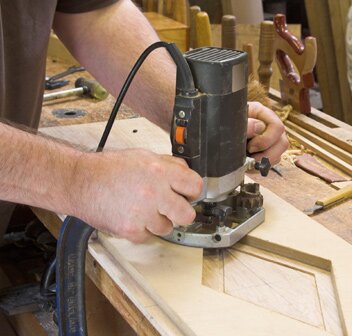Woodworking is a great hobby to take on. It keeps your mind sharp and your hands nimble; however, it requires the use of a lot of wood products and materials that could have a negative impact on the environment. To ensure that your woodworking project is eco-friendly you do not have to go to great lengths, all you have to do is make better product choices.

Reclaim Wood Where You Can
The first strategy for keeping your woodworking projects eco-friendly, or “green,” is to reclaim wood whenever you can. Reclaiming wood means that you use scraps that would normally be discarded, that you take wood from old structures that are to be torn down or remodeled and that you utilized wood that is already fallen and basically “litter.” This strategy not only reduce the carbon footprint of your woodworking hobby, but it will also save you money and give your projects more character.
Use Sustainable Lumber
If you need to purchase new lumber products then you need to make sure your lumber is harvested in a sustainable manner. This means that the lumber harvesting methods are legal, ethical and responsible. To determine this all you have to do is to look for sustainable lumber certifications on your lumber products. If this certification is not available, then learn about the company or companies that are supplying lumber to your local retailer. See how they select timber, how they harvest timber and where they are getting their timber. Avoid purchasing from countries that are notorious for illegal and unsustainable timber harvesting strategies, such as the former Soviet Union.

Avoid VOCs
VOC stands for volatile organic compounds. These compounds are frequently found in paints and chemicals used to treat and preserve wood products. The problem that these chemicals create is air pollution. VOCs can be harmful to you, your kids and your pets. Fortunately, many companies are producing VOC-less products that still produce the finishes that you want.
Non-Toxic Is the Way to Go
The final tip is to select non-toxic products whenever possible. This is particularly true if you are creating a wood project for children, the elderly or pets. Non-toxic stains and paints are widely available, and generally are no more expensive than regular paints, stains and fillers. To find these products all you have to do is to read the label. “Non-toxic” will be printed clearly on the label of these products.
DIY projects is a topic that Madeline Binder loves to write about. She has a large library of DIY projects that allow even novice woodworkers to create remarkable family heirlooms, especially her train table plans and the toy trains and accessories at her Toy Train Store.




























.jpg)













































